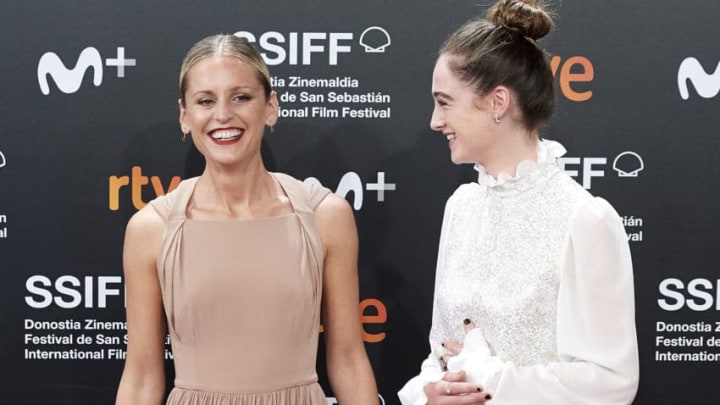Visually dynamic and full of rage, The Other Lamb uses an all-female cult as a backdrop for a profoundly affecting coming-of-age story.
It’s shaping up to be quite a year for cults on film.
The Other Lamb tells the story of a young girl growing up in an isolated religious community comprised solely of women and their leader, who they call Shepherd (Michiel Huisman). To the members of the cult, their small homestead in the forest is a paradise — they have the loving support of their sisters, and when the Shepherd offers them his grace they wail in ecstasy. But for some, the peaceful community is showing cracks in its veneer that are becoming harder and harder to ignore.
Selah (Raffey Cassidy, who played young Natalie Portman in last year’s Vox Lux and is quickly developing a reputation for attaching herself to fascinating projects) was born into this cult and is the favorite daughter of the Shepherd. He dotes on her, seemingly transfixed by her uncanny resemblance to her mother who died in childbirth, but as she grows into a teenager, his attention becomes less than pure of heart. Selah is a true believer and cherishes his affection…until she doesn’t.
Her coming-of-age journey is rockier and more perilous than most. As Selah reaches maturity and begins to menstruate, her position within the community changes in ways she isn’t comfortable with. After forging a connection with one of the Shepherd’s wives, a disillusioned soul who is kept isolated lest her lack of faith spread to the other women, they are forced to undergo a dangerous journey. As the Shepherd leads his flock to a new Eden, her trust in him both as a father and as a prophet has been irreparably damaged.
At its heart, The Other Lamb is a story of female empowerment, about a young woman who has been raised since birth to believe that her very biological nature makes her impure and that she requires the guidance of a man to find salvation. Against all odds, she somehow overcomes indoctrination to reclaim a sense of individual identity and agency. Cassidy is so talented at portraying a wide array of emotions with just her facial expressions, and director Małgorzata Szumowska uses that to full advantage throughout the film.
She frequently focuses on her against a gorgeous natural backdrop, her face a perfect vision of doubt and rage as she screams into the void. The frustration of feeling trapped is especially effective — like the lamb, Selah represents purity and innocence but, also like the lamb, there is a sense that she is being sacrificed. Her individuality and limitless potential have been laid at the altar of the Shepherd without her consent, and once Selah realizes it, the loss devastates her.
Cassidy and Huisman make a perfect (and perfectly disturbing) match, her adoration and desire to please turning to barely concealed disgust as his attentions grow increasingly lustful. Both find moments to depict the inner lives of their characters that lend depth to their narrative arcs. An epic side-eye from Cassidy as the rest of the women rush to lift the Shepherd worshipfully into the air, Huisman’s desperation to maintain control over his flock as he begins to feel everything he’s worked so hard to build crumbling under his feet — these ground the film with an inescapable humanity that balances perfectly with its tendency towards allegorical and ethereal imagery.
The Other Lamb may be about a cult on the surface, but it contains within it the rage of a misogynistically imposed, uniquely female shame within society that is frustratingly familiar to most women.
